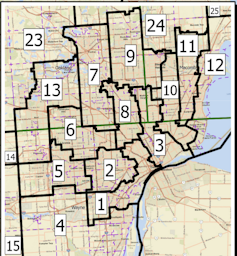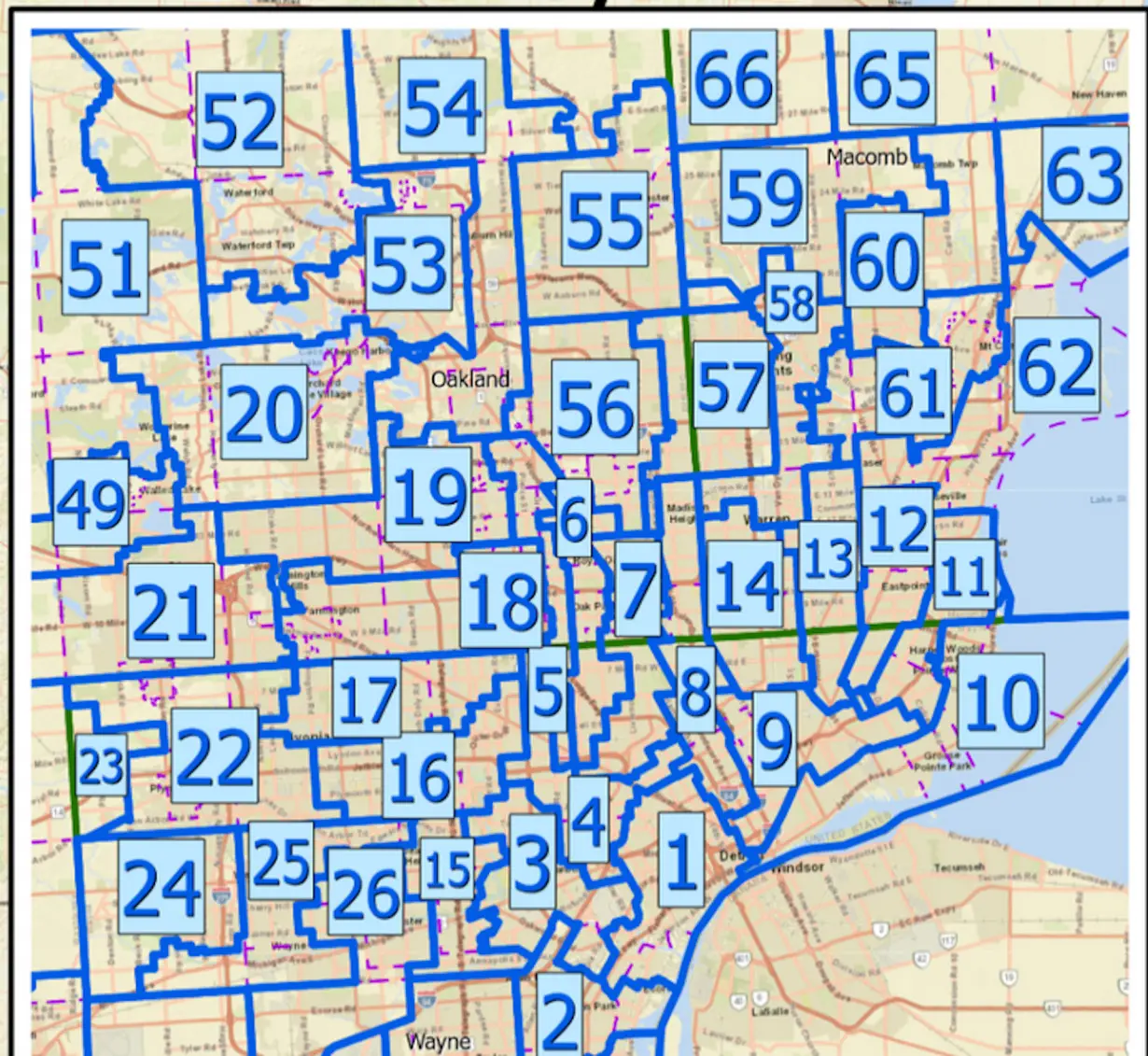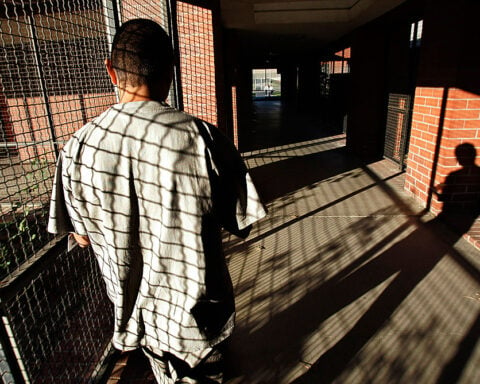
The commissioners appealed the ruling to the U.S. Supreme Court. But on Jan. 22, the high court refused to stop the process of redrawing the maps. The panel now has until Feb. 2 to present redrawn maps for public comment, with final ones due in March. The Supreme Court may still rule on the commission’s appeal – but likely not until after the state’s primary elections on Aug. 6.
Why did Detroit lose majority Black districts?
Each new state House district is supposed to have 91,612 residents, a number derived from dividing Michigan’s 2020 population by its 110 state House districts. According to the U.S. Census Bureau, Detroit lost 93,361 Black residents over the past decade, while losing only 74,666 people in total, reflecting an influx of White, Latino, multiracial and Asian residents.
One way the commission adjusted for these population shifts and provided opportunities for Black candidates was to create districts that stretched across municipal boundaries – from Detroit into Macomb and Oakland counties. These new district boundaries combined Black voters in the suburbs and Detroit, creating a large enough percentage to allow minority candidates to win elections.
The decline in majority Black districts in Detroit isn’t unique to the 2022 district maps. In 2012, the Michigan Legislative Black Caucus protested losing two other Detroit state House districts. Those losses were related to the drop in Detroit’s 2000-2010 population. In other words, the declining Black population in Detroit is a persistent demographic trend that complicates applying the Voting Rights Act.
Why is it so complex to make the Voting Rights Act work in Detroit?
Under the Voting Rights Act, maps can neither crack nor pack minority voters.
Cracking is when minority voters are spread across multiple districts, which makes it harder for them to win elections.
Packing groups more minority voters than are typically needed in a district to elect a minority candidate and also dilutes the number of minorities likely to be elected overall.
Election results demonstrate that in Southeast Michigan general election contests, many Michigan voters care more about whether a candidate is a Democrat or a Republican than their race. Experts hired by the commission advised them that 35% to 45% is the sweet spot between packing and cracking Black voters in these districts. The seven House districts ordered redrawn by the court have 37% to 49% Black voters.
Black migration from Detroit to its inner-ring suburbs provided the commission a way to unpack majority-minority districts and avoid cracking Black suburban populations. For example, the Black population of Eastpointe, a suburb immediately north of Detroit in Macomb County, increased from 29% in 2010 to 52% in 2020.
Black candidates won 2022 elections in five of the seven House districts that the court has ordered redrawn. But the plaintiffs in Agee v. Benson argue that it takes higher percentages of Black voters to win primaries because so many candidates run and end up splitting the vote. In two primary elections where Black candidates lost, the votes were split. In District 11, which is 44% Black voters, the ballot had nine candidates. Veronica Paiz, a Hispanic woman, won with less than 19% of the votes cast. In District 8, which has 46% Black voters, Mike McFall, a white man, won the primary with 38% of the vote against two Black candidates.
So you’re suggesting too many primary candidates, not map boundaries, dilute the Black vote?
Yes, that is what the evidence suggests. For example, three Black primary candidates lost in the 9th House District, which has 53% Black voters. The 5th House District with 57% Black voters attracted five primary candidates; a white woman won with 38% of the votes cast, while two Black men won 40% of the primary votes between the two of them. So changing district boundaries isn’t an effective way to solve the problem.
Other solutions like ranked choice voting could increase opportunities for Black primary victories, regardless of how many candidates run. This voting system is gaining popularity in places as disparate as Alaska, Maine and New York City.
The new maps must be finalized by March 29. What does this mean for 2024 elections?
Given the tight deadline for the commission to publish the maps, receive public comments and then vote on the maps, candidates will have a shorter window to organize primary election campaigns. Some incumbents will see their constituents shift again. And it is possible that Black voters will be packed into a smaller number of districts.

I gathered signatures for the ballot initiative that put the redistricting commission before voters, and I have donated $100 to the group Voters Not Politicians.
Lyke Thompson helped gather signatures for the 2018 ballot initiative that created the citizen commission.
Source: The Conversation

 Germany sees meat exports to EU continuing after foot-and-mouth case
Germany sees meat exports to EU continuing after foot-and-mouth case
 Parliament speaker to lead Taiwan delegation to Trump's inauguration
Parliament speaker to lead Taiwan delegation to Trump's inauguration
 German economy contracted 0.2% in 2024
German economy contracted 0.2% in 2024
 Middle East latest: Palestinian prime minister says Palestinian Authority should run Gaza in future
Middle East latest: Palestinian prime minister says Palestinian Authority should run Gaza in future
 Nokia signs multi-year patent license agreement with Samsung
Nokia signs multi-year patent license agreement with Samsung
 Irish parties secure 'comfortable majority' for new government
Irish parties secure 'comfortable majority' for new government
 Bayern Munich signs US youngster Bajung Darboe from LAFC
Bayern Munich signs US youngster Bajung Darboe from LAFC
 Novak Djokovic breaks a tie with Roger Federer for the most Grand Slam matches in tennis history
Novak Djokovic breaks a tie with Roger Federer for the most Grand Slam matches in tennis history
 China's RedNote: what you need to know about the app TikTok users are flocking to
China's RedNote: what you need to know about the app TikTok users are flocking to
 The commission’s work is focused on state House districts in Metro Detroit because primaries for the House will be held in August 2024.
The commission’s work is focused on state House districts in Metro Detroit because primaries for the House will be held in August 2024.







